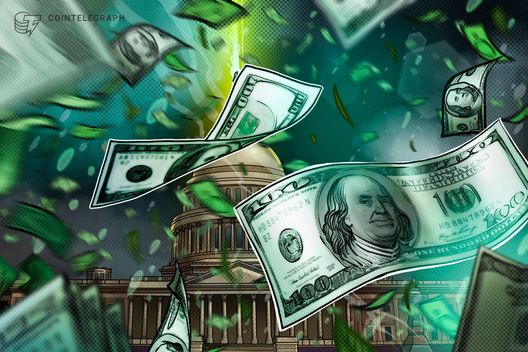

The United States' national debt has reached a staggering $37 trillion, a figure that has sparked both alarm and debate among economists and policymakers. Republican Congressman Thomas Massie attributed the ballooning debt to the "One Big Beautiful Bill Act," supported by US President Donald Trump. This surge in debt coincides with concerns about inflation and the potential devaluation of the dollar, leading many to seek alternative assets. Among these, Bitcoin has emerged as a prominent contender, with analysts suggesting that the current macroeconomic environment could pave the way for a significant rally, potentially reaching $132,000 by the end of the year.
The connection between rising US debt and Bitcoin's potential growth lies in the concept of monetary scarcity. Bitcoin's supply is capped at 21 million coins, making it a deflationary asset in contrast to fiat currencies, which can be printed at will by central banks. As the US government continues to accumulate debt, concerns about the dollar's long-term value may drive investors toward Bitcoin as a hedge against inflation and currency devaluation.
Adding fuel to the fire is the growth of the M2 money supply, which measures the total amount of currency and liquid assets available in an economy. An increasing M2 money supply can lead to inflation, further diminishing the purchasing power of the dollar. Historically, Bitcoin bull markets have coincided with the expansion of global liquidity, suggesting a correlation between the two. As more money circulates in the economy, some analysts believe that a portion of it will flow into riskier assets like Bitcoin, driving up its price.
Several analysts have offered price predictions for Bitcoin in the current environment. Technical analysis suggests a potential target of $125,000 by late August 2025, citing strong bullish momentum indicators. Other forecasts range from $100,000 to $150,000 by the end of 2025, contingent on factors such as ETF inflows, regulatory clarity, and macroeconomic conditions. Some even suggest Bitcoin could reach $200,000 before the year's end. However, other analysis suggests that Bitcoin will test the support level of $111,795 area and then continue growth with a target at $125,625.
Despite the optimistic outlook, it's important to note that the cryptocurrency market is inherently volatile, and predictions are not guarantees. Bitcoin's price could be influenced by various factors, including regulatory changes, technological advancements, and shifts in investor sentiment.
Jim Cramer of CNBC has also expressed confidence in Bitcoin as a hedge against the growing US debt. He stated that he owns Bitcoin for his children, reflecting a growing belief that it can serve as a store of value in an uncertain economic future. Elon Musk has also criticized the US spending bill and voiced support for Bitcoin.
In conclusion, the confluence of a record $37 trillion US debt, rising M2 money supply, and increasing acceptance of Bitcoin as a store of value has created a potentially favorable environment for the cryptocurrency. While the $132,000 target remains a projection, the underlying factors suggest that Bitcoin could experience significant growth in the coming months.